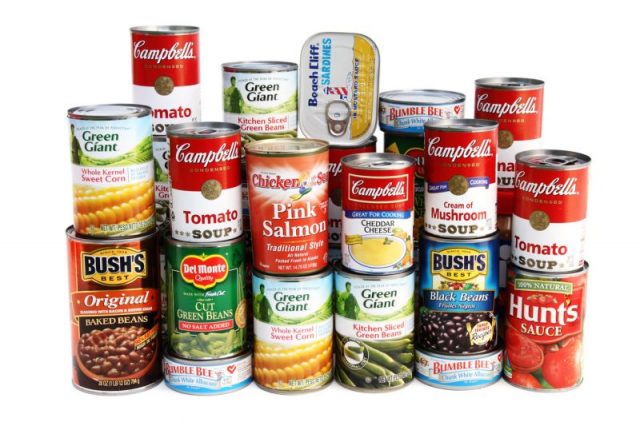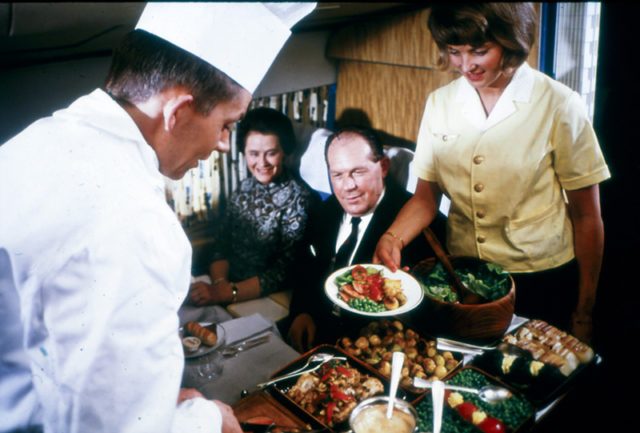Price of a Pound of Beef in 1970
Food is the slap-up equalizer and grocery shop prices i of the main aspects of any society. Buying food, and cooking and sharing food, has always been one of the most bonding experiences of people around the globe. Whether it'due south the family dinner or part of a birthday commemoration for a child or an integral part of an important religious occasion, nutrient is a key part of everyone'south daily being, and has been since the beginning of time.
Information technology may seem as though food prices go on to rising year subsequently year, but doing a deep dive into costs 40 years ago, versus costs today, reveals some surprising insights into the true economical moving-picture show of what nosotros pay for groceries. The global supply chain continues to evolve and quicken, and nutrient is even more accessible now than it was in the 1970s. Surprisingly, even when inflation is factored in, it's cheaper, too. Folks may complain about the toll of a adept steak or a large bag of Basmati rice in the stores, only, in fact, food is less expensive at present than information technology was back when Richard Nixon was president of the Usa.
Groceries have the reputation of eating up a large portion of a family'due south overall income, and today that's true in countries like Republic of kenya, where every bit much equally l percentage of household budgets go to food. But in North America, the cost of groceries has really been stable and has even fallen in some examples.

Variety of canned food
According to the website Ranker, which tracks comparative prices of everything from meat to dairy to vegetables, prices began soaring at the commencement of the "Me Decade," as the 1970s are called in popular culture. Inflation was out of control, and wages were ascension to endeavour to keep pace. Nutrient costs rose quickly, and articles began appearing in the American media about thefts of meat from grocery stores' refrigerated shelves.
The cost of nutrient back and so was one of the biggest challenges of Richard Nixon'due south get-go term in role. To address it, he imposed a wage and price freeze in 1971; but, as soon as he won reelection in 1972, Wessels Living History Farm notes that he relaxed that measure and prices began skyrocketing again.

A chef serving nutrient on a plane. Photograph :SAS Museum CC By 2.0
Over the ensuing years, equally farmers began exporting more and more of their crops, prices at home stayed loftier. Only when people's tastes began changing, as they always do, demand fell and prices followed adapt. Past the 1980s and 1990s, more than and more than folks were adopting a vegetarian lifestyle, which impacted beefiness, pork, and poultry prices because fewer people ate information technology, certainly in North America. Pork chops—one of those foods many people gave up—cost $one.16 USD per pound dorsum in 1970; today the same pound costs $3.77 USD.
When the 1970 price is adapted for inflation, it turns out that pork chops during the Nixon years is nearly double the toll today—$seven.89 per pound. In 1970, a dozen eggs in America sold for 61¢. Today, the aforementioned dozen eggs costs $1.53. But when that 1970 price is adapted for inflation, the price soars to $4.15, and that's not for farm fresh, complimentary range eggs. Other surprising results include breadstuff which, adjusted for inflation, cost $1.63/pound in 1970 compared to $i.36 today and milk, averaging almost $3.00/gallon today while 50 years ago it price $1.eighteen/gallon which translates to $7.66 in today's dollars.
Furthermore, studies show that, on average, Americans spend less than 10 percent of their income on food (ranging from about 8 pct to 35 per centum, depending on income). USDA reports indicate than in 1970, the average was not ix percent just closer to xv percentage. That figure includes food eaten out in restaurants, and have out and commitment; the amount of restaurant nutrient consumed today is much greater than in the past, all the same our overall percent of income spent on food is even so less than your parents and grandparents.
Related Article: Weird Food Eaten past British Royals you Wouldn't Observe on whatsoever Plate Today
Trends touch food prices enormously, and while many nations have long followed vegetarian and vegan diets, North America has been slower to follow suit. Now, however, near every family unit has at to the lowest degree 1 non-meat eater in its ranks, and consequently, products that appeal to them have risen in toll. Gluten free breadstuff costs at least a dollar (USD) more than than "regular" bread. Almond milk is more expensive than cow'south milk. The list goes on and on. What nosotros take yet to discover is how the electric current global situation will touch the food supply chain.
Source: https://www.thevintagenews.com/2020/05/07/grocery-store-prices/